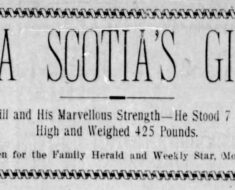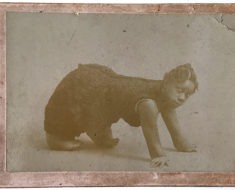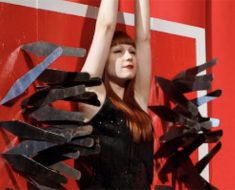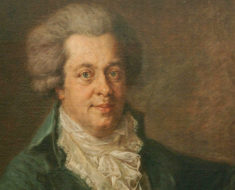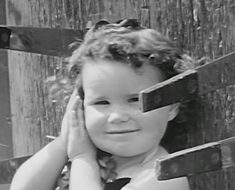If you were a kid reading comic books in the mid-20th century, chances are you saw ads in every issue selling x-ray vision glasses. If they worked, you could’ve been like Kuda Bux, known as “The Man with the X-Ray Eyes.”
Bux, a Pakistani magician born as Khudah Bukhsh in 1905, mystified many with his ability to seemingly have eyeless sight in the mid 1930s. He also walked on hot coals, allowed himself to be buried alive for up to three hours, and could stop his heart and pulse on command.
But it was his x-ray vision that was of special interest to many who’d been studying such possibilities at the time, including French writer Jules Romains. Psychic researcher Harry Price described Romains’ beliefs in his book, Confessions of a Ghost Hunter:
“As somnambulistic subjects can apparently guide themselves with remarkable ease, with their eyes closed or even bandaged, they may ‘acquire a prodigious delicacy of sensation, and know how to make use of a thousand signs which a man in a waking state passes by without notice. Their hearing, touch, and smell undergo hyperaesthetic change and manage sometimes to take the place of sight.’”
Bux demonstrated his talents by blindfolding himself with surgical bandages, tape, cotton wool, a mask, and dough covering his eye sockets. His face was completely covered, except for his nose. He then proceeded to read anything put in front of him. The Man with the X-Ray Eyes even demonstrated his skills by riding a bicycle through the busy streets of London with his blindfolding method in place.
In 1935, he performed several tests for Price and other researchers at the University of London Council for Psychical Investigation. Price was allowed to select any book off a shelf and flip to any page. “I put my finger on a paragraph,” Price wrote, “and asked him to read it aloud. This he did at once, almost as quickly as the reader is perusing this page. There was no sign of hesitation. Other books were placed in front of him, some with large print and some with small. He read them all.”
Bux continued to impress the council with similar feats.
His blindfolding method was key to his abilities. Bux wouldn’t allow a bag to simply be placed over his head. According to Price, this was because Bux claimed that he “sees through, or by means of, his nostrils.” This explained why his nose was always in the clear.
It sounds a bit absurd, but Romains postulated a similar notion regarding eyeless sight. As Price explained:
Romains states it is necessary to leave the nostrils free in order that his blindfolded or blinded subjects shall distinguish colors. He says that ‘the nasal mucosa is sensitive to light and to different colored regions of the spectrum. This function is sharply distinct from smell.’ He continues: ‘The part played by the nasal mucosa leads us to the following question: is the unknown organ of extra-retinal vision situated in one part of the body? Localized in a single one or diffused through many?’ Kuda Bux answers that, in his case, the ‘unknown organ’ is situated in his nose.”
Despite that, Price and his team concluded that Bux was an extraordinary showman, but did not possess x-ray vision.
“During our test Bux would not allow us to adopt measures that absolutely precluded his seeing down the side of his nostrils and, although we witnessed a clever performance, all we learnt that afternoon was how extremely difficult it is to blindfold a person, using ordinary methods,” Price wrote.
Regardless of Price’s conclusion, Bux continued to perform his x-ray feats for audiences. However, three years later, at a demonstration with 300 people at a hotel, he was offered $10,000 if he could read with an ordinary bag over his head. The offer was made by Joseph Dunninger, a magician and president of the Universal Council for Psychical Research. Bux declined, saying his “soul” only provided this power to read through obstacles if it were done his way.
The show went on, and Bux prepared his blindfolds in his usual fashion, which on this occasion included napkins from the hotel. He then read words on a blackboard, from newspapers, and more. The audience was amazed.
Yet as a newspaper article described it: “But always the nose of Kuda Bux stuck out of the wrappings, and he tilted his head; back in a way that might suggest to the skeptical that there was a slight gap in the dough down the left side of his nose through which he might be reading.”
A reporter asked if he could read a card he placed inside a napkin—one just like Bux had used in his blindfolding.
“No, the napkins must be in contact with my body,” the magician replied.
He ended the demonstration and removed the bandages, dough and napkins. The curious reporter grabbed one of the discarded napkins and pressed it to Bux’s head.
“I place it in contact with your forehead,” the journalist said. “There’s no dough in the way now, only one of the several napkins through which you read before. Can you read the name of the bank in this blank check that I take out of my pocket?”
Bux said he could not. The show was over.
A psychologist attending the performance, who had been impressed up until then, suddenly grew disappointed. “My goodness,” he exclaimed, “Then this is only some sort of sleight of hand trick.”
Still, it was quite a trick. Dunninger explained to a newspaper how it worked:
“Reading while ‘blindfolded’ is more than three centuries old, and has been discarded by most magicians plying professions today. It is extremely simple and can be accomplished by most persons with some practice. The reading is done down along the side of the nose. The depression in the eyes and the bridge of the nose allows just enough space for one to peer down at the object as held in the so-called mystic’s hands.”
See Bux perform in the 1938 video below.




